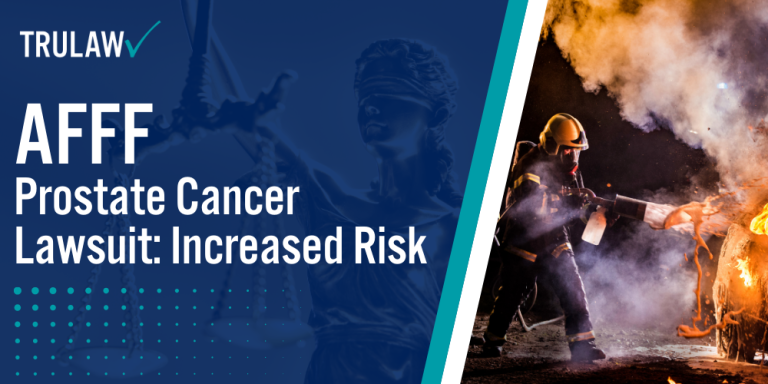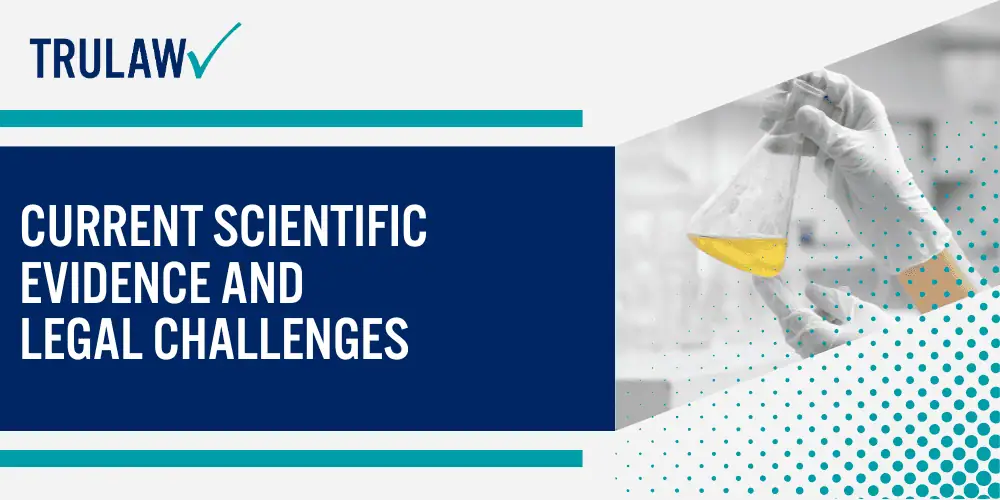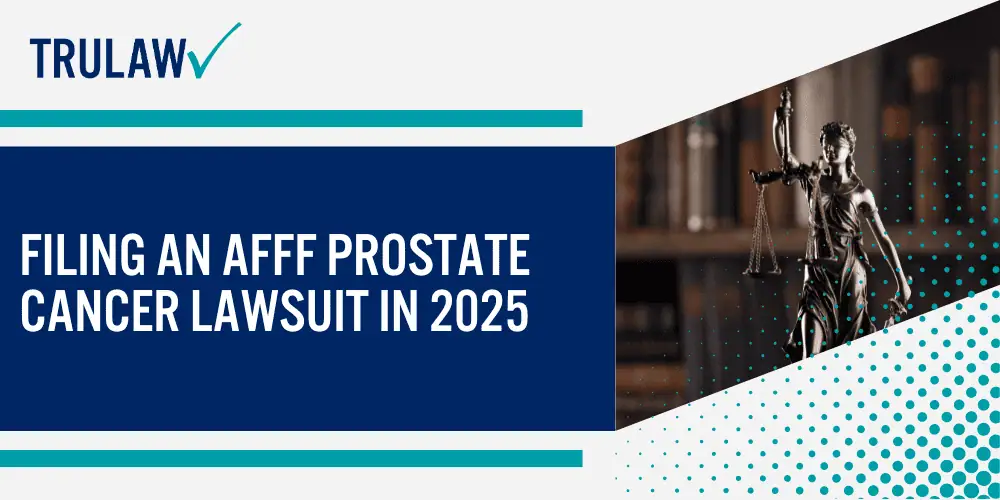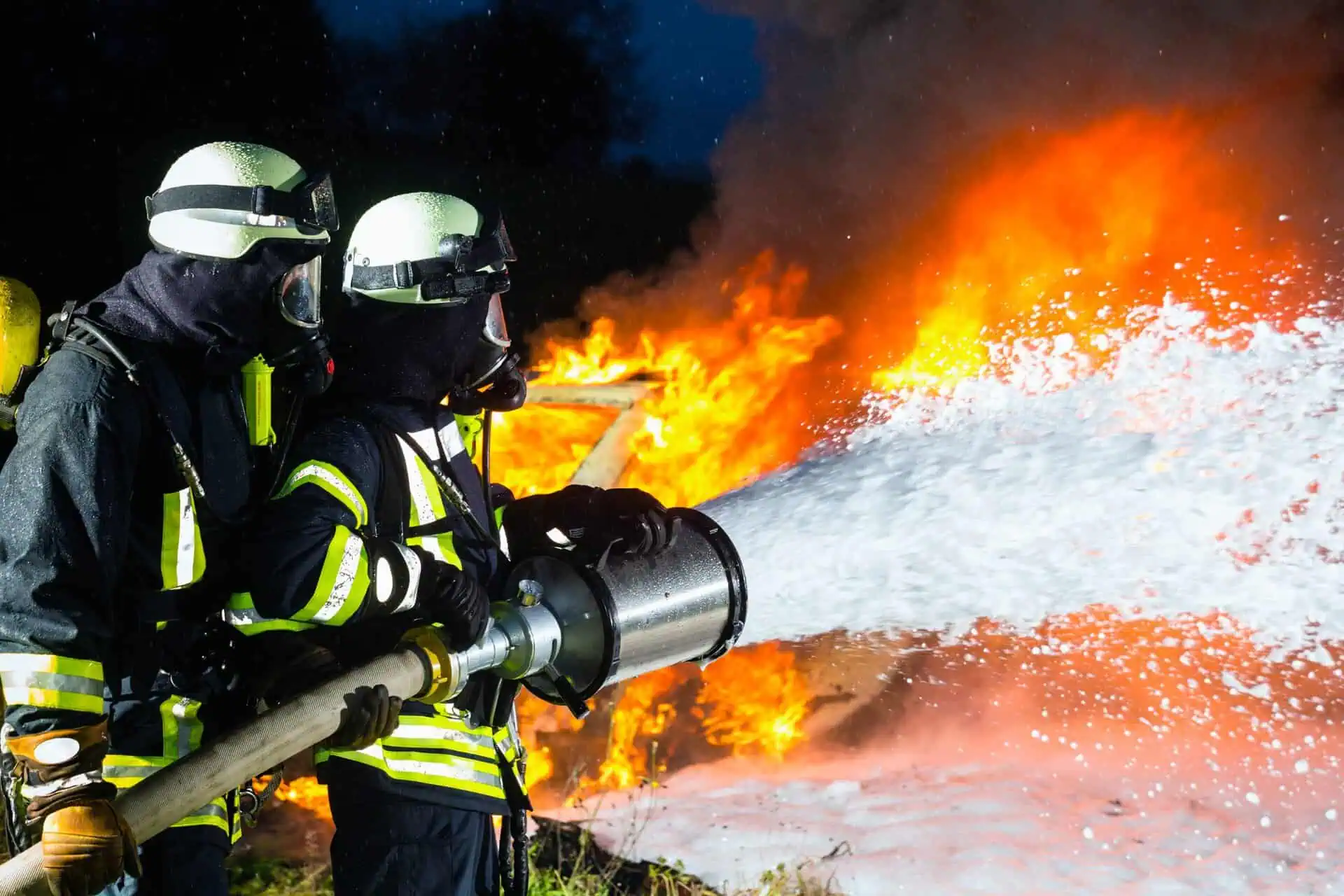Aqueous Film-Forming Foam (AFFF) has served as the gold standard for fighting flammable liquid fires since the 1960s, containing per- and polyfluoroalkyl substances (PFAS) that earned the nickname “forever chemicals” due to their persistence in both the environment and human body.
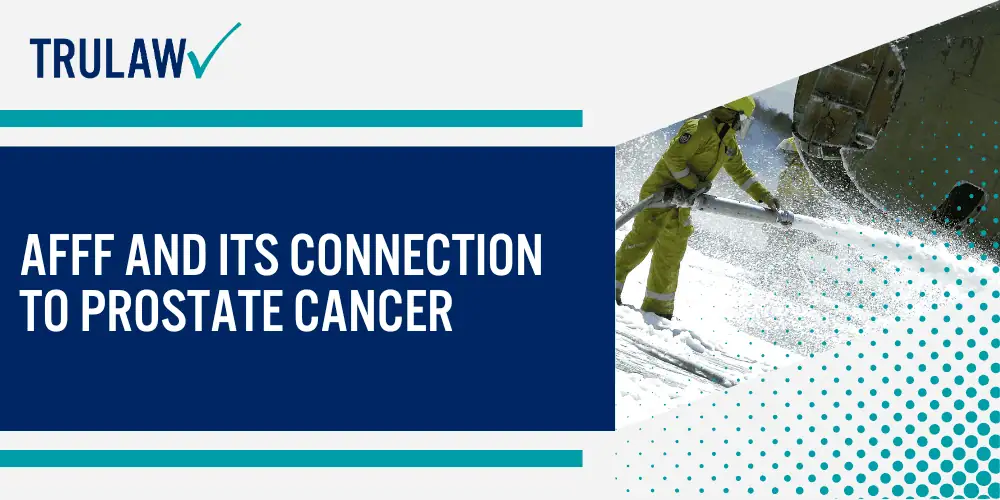
While scientific evidence strongly links exposure to PFAS with kidney and testicular cancers, emerging research increasingly suggests prostate cancer may also develop from long-term AFFF exposure, though plaintiffs face additional evidentiary challenges compared to other cancer claims in the ongoing multidistrict litigation.
What Makes AFFF Dangerous
AFFF’s effectiveness at suppressing fuel fires comes from its unique chemical composition, specifically the PFAS compounds that create a film barrier preventing oxygen from reaching flames.
These synthetic chemicals resist breakdown in nature and accumulate in human tissue over time, creating a persistent exposure risk long after initial contact.
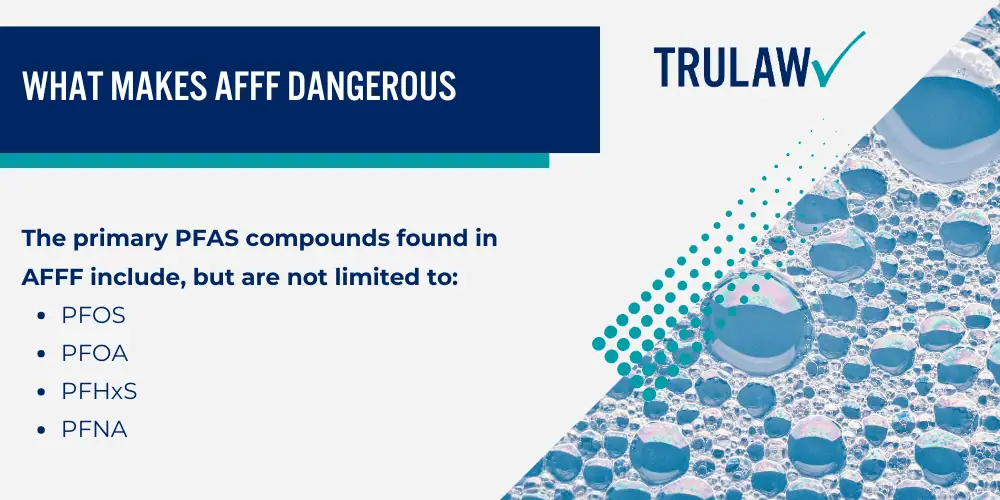
The primary PFAS compounds found in AFFF include, but are not limited to:
- PFOS: Perfluorooctane sulfonic acid with 5.4-year half-life in human blood serum
- PFOA: Perfluorooctanoic acid persisting 3.8 years in human tissue
- PFHxS: Perfluorohexane sulfonic acid increasingly detected in environmental samples
- PFNA: Perfluorononanoic acid linked to specific endocrine disruption effects
Once absorbed into the bloodstream through skin contact, inhalation, or ingestion, these toxic chemicals remain in human tissue for years with PFOS demonstrating a half-life of 5.4 years and PFOA persisting for 3.8 years in human blood serum – prompting the Environmental Protection Agency to classify these substances as emerging contaminants of concern.
This extended biological persistence means firefighters and others exposed to AFFF foam carry these chemicals in their bodies long after their last exposure, allowing for continued cellular damage and disruption of normal biological processes.
How PFAS Exposure May Lead to Prostate Cancer
PFAS chemicals function as endocrine disruptors that interfere with the body’s hormonal systems, particularly affecting testosterone and dihydrotestosterone (DHT) production which play key roles in prostate health and function.
Research published in 2021 demonstrated that certain PFAS compounds can bind to and activate androgen receptors, potentially triggering abnormal cell growth in prostate tissue.
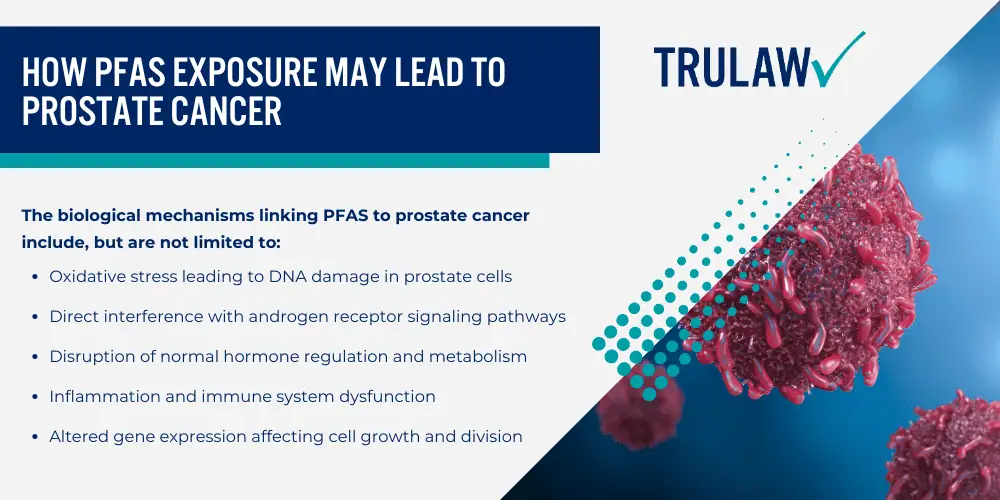
The biological mechanisms linking PFAS to prostate cancer include, but are not limited to:
- Oxidative stress leading to DNA damage in prostate cells
- Direct interference with androgen receptor signaling pathways
- Disruption of normal hormone regulation and metabolism
- Inflammation and immune system dysfunction
- Altered gene expression affecting cell growth and division
Studies examining human cells in vitro have shown that PFAS exposure at levels commonly found in occupationally exposed populations can promote prostate cancer cell proliferation and survival.
The ability of these dangerous chemicals to mimic or interfere with natural hormones creates an environment where normal prostate cells may transform into cancerous ones, particularly with prolonged exposure over many years of firefighting service.
Who Faces the Highest Risk
Firefighters experience markedly elevated prostate cancer rates compared to the general population, with NIOSH research documenting higher-than-expected cancer diagnoses and deaths, reflecting both their intensive AFFF exposure and the synergistic effects of other occupational carcinogens.
Military firefighters face particularly high exposure levels through mandatory training exercises requiring AFFF use, often conducted without adequate protective equipment during earlier decades when human health risks were not fully recognized.
High-risk occupations for AFFF exposure include, but are not limited to:
- Municipal Firefighters: Civilian departments using AFFF for structural and vehicle fire suppression
- Military Firefighters: Service members across Army, Navy, Air Force, Marines, and Coast Guard fire units
- Airport Personnel: Rescue and firefighting teams required to maintain AFFF readiness for aircraft emergencies including jet fuel fires
- Industrial Response Teams: Chemical plant emergency responders handling flammable liquid incidents
- Naval Shipboard Crews: Personnel trained in shipboard firefighting using AFFF systems
- Manufacturing Workers: Employees at facilities producing or handling AFFF concentrates
- Training Instructors: Fire academy personnel conducting repeated live-fire exercises with firefighting foams
The Department of Defense has identified PFAS contamination at hundreds of military installations worldwide, creating exposure risks not only for active firefighters but also for support personnel and families living on or near contaminated bases.
This widespread PFAS contamination, combined with decades of direct occupational exposure, has created a large population of veterans and civilians who may develop prostate cancer years or even decades after their initial AFFF contact.
If you or a loved one developed prostate cancer after substantial AFFF exposure during firefighting service, you may be eligible to seek compensation despite the ongoing scientific debates.
Contact TruLaw using the chat on this page to receive an instant case evaluation that can help determine whether your exposure history and medical diagnosis qualify for inclusion in the growing AFFF litigation.
